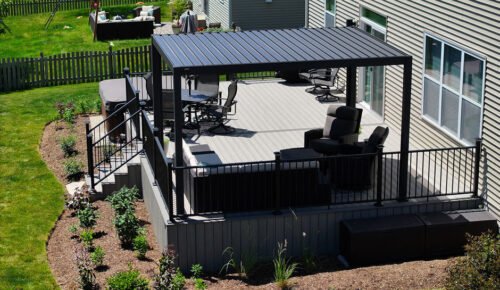Moving a co-working space is about perfectly transferring a dynamic environment where creativity and cooperation flourish, not only about rearranging desks and chairs. In a co-working facility, where several companies could depend on shared resources, poorly handled removals can affect not one but several businesses.
With the correct strategy, though, you may relocate your co-working space with the least disturbance and possibly utilise the relocation as a chance to improve the community spirit. Here’s how you do it.
Understand the Needs of Your Community
Spend some time learning the needs of your co-working group before you begin organising your move’s logistics. Co-working spaces are all about the people who use them (freelancers, small enterprises, remote teams), and they depend on a functional, motivating environment from which to work.
First, get your team members’ opinions on the relocation using a survey or a meeting. What are their worries? Which facilities do they make use of most? How might the new area better meet their needs? As you design the facilities and architecture of your new site, this input will be priceless.
Including your employees from the start not only provides insightful analysis but also stimulates enthusiasm and purchase of buy-in for the relocation. Knowing that their requirements and preferences are taken into account can help your members feel good about the migration.
Choose a Location That Enhances the Experience
Choosing the correct site for your new co-working facility is really vital. The site should be easily reachable, preferably in a busy area drawing your intended clients. Think about things like public transport, parking availability, and surrounding businesses such as cafés, eateries and gyms. The surroundings of your new area can greatly affect its success and attractiveness.
Consider the potential expansion of your co-working community while scouting a new site. As your community grows, is there sufficient room to house more members? Exist choices for adjustable leasing terms that would expand with your company?
Selecting a site that not only meets your present demands but also enables future expansion will spare you the trouble of moving once more in a few years.
Plan the New Layout for Flexibility and Collaboration
Your new co-working area should be laid such that comfort, creativity, and teamwork are encouraged. Combining private work quarters, open, collaborative spaces, and public places where members could unwind helps the co-working environment flourish.
Consider how various companies would utilise the space when designing your new layout. Think about design areas inside the space to accommodate several working styles.
You might have a quiet area for concentrated work, a group area with bigger tables and whiteboards, and a sociable area with cosy seats and a coffee bar, for instance. Flexibility is essential; your design should be easily reconfigured as your community develops and fit for many purposes.
Remember also the need for ventilation, acoustics, and natural light. The productivity and well-being of your members can be much enhanced by a well-lit, peaceful, airy environment. Purchasing ergonomic designs and high-quality furniture will not only increase comfort but also assist in drawing in and keeping members.
Communicate Clearly and Frequently
Moving a co-working space depends on extensive communication, particularly in cases involving several companies. Tell your team members at every level from the time you choose to relocate.
Frequent updates regarding the timing, how the relocation will impact daily operations, and what they can expect in the new facility will assist to allay worries and maintain everyone in agreement.
Think about designating a specific move communication channel such as a Slack channel, email newsletter, or section on your website. The site can provide all relocation-related information, such as FAQs, moving dates, and specifics about the new site.
To answer any queries and create buzz, you might also like to have an open house or Q&A session at the new site before the relocation.
Clear communication also covers your staff. Make sure your staff understands their parts in the process and is ready for the relocation. This covers everything from labelling and packing goods to greeting guests into the new venue.
Probably some of your staff will have to work from home during the transition. Here are some useful productivity tips they can resort to.
Partner with a Specialist Commercial Removals Service
Successful relocation mostly depends on the knowledge of a qualified commercial removal agency, especially when moving a complex arrangement like a co-working space.
Search for a removal firm with knowledge of comparable projects and able to provide complete services, including packing, transporting, unpacking, and even assistance with setting up your new place.
Consider a removal partner’s experience with moving offices or such surroundings while selecting one. They should realise the need to reduce downtime and make sure that all furniture, tools, and personal belongings are handled carefully.
To determine their capacity to oversee a project of your scope and complexity, request references or case studies. Working closely with you, a competent removals firm will produce a thorough moving plan containing a checklist of chores and timeframe.
They may also advise on the best packing techniques and materials to guard your belongings during the relocation. Another important factor is insurance; ensure your removal partner provides sufficient coverage for your furniture and equipment.
Coordinate the Move to Minimise Disruption
Reducing disturbance to your partners is one of the toughest issues in moving a co-working space. Many companies rely on your space to operate. Hence, it’s important to arrange the relocation so that the least amount of downtime results.
Think about a gradual relocation where several areas of the co-working space are moved at various periods. This guarantees that your members may keep working with minimum disturbance by letting some areas stay operational while others are being relocated.
Alternatively, you can decide to move during a period when work is usually lower or over a weekend. Working with your removals provider will help you to guarantee thorough coordination of all logistics.
This covers planning parking and loading access at both sites, making sure utilities and internet services are running in the new facility before your members arrive, and timing the move to minimise high-traffic hours.
Set Up the New Space Efficiently
Setting up the area as fast and effectively as you can comes next once everything is relocated to the new site. Start with the basics – desks, seats, internet, and power outlets, so that members might get straight away working. Then, concentrate on arranging common areas, conference rooms, and other conveniences.
Refer back to the layout plan you produced to direct the setting procedure. Should your removals company provide unpacking services, they will enable you to have the place ready in record speed.
Including your employees in the setup procedure will also help since they will be familiar with the needs of your members and can guarantee precise placement of everything.
Use the chance to test all equipment, from printers to projectors, as you set up to ensure everything is operating as it should. This will help avoid any problems when members begin using the area.
Reopen with a Bang
You should formally reopen after your new co-working space is set up and ready to use. Think about organising a launch to honour the new location and greet your members – this might be an open house for casual business, a networking function, or even a workshop or conference.
A reopening event will help you show the new space, introducing any new features or services, and strengthening the feeling of community inside your co-working space. It also offers a chance to draw new members to the co-working space at its new site.
Photographs and videos will help you to document the event and assist you in advertising the new location on your website and social media platforms and will draw attention to your new place.
Conclusion About Moving a Cowring Space
Although moving a co-working space is a big project, it can go smoothly and successfully if well planned, communicated clearly, and with the appropriate commercial removals.
You can make sure your co-working space stays vibrant in its new home by concentrating on the needs of your community, selecting the appropriate site, and properly arranging your new workspace.
Use the movement as a chance to revitalise and improve the surroundings, therefore improving the conditions for company development, creativity, and teamwork.








































































































